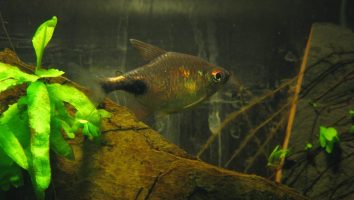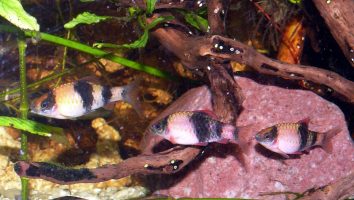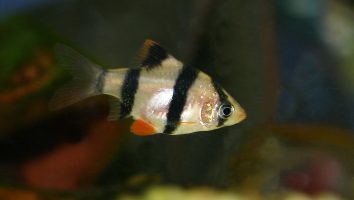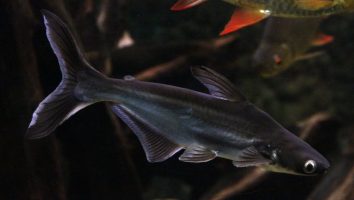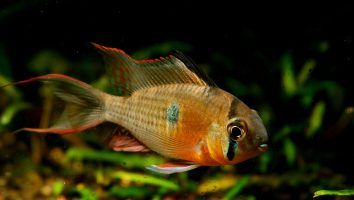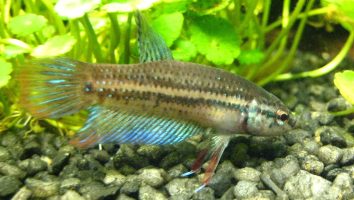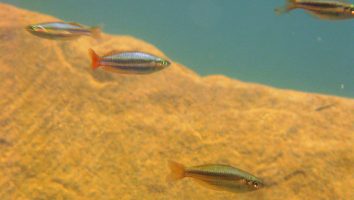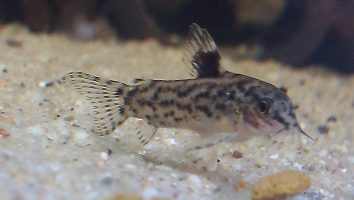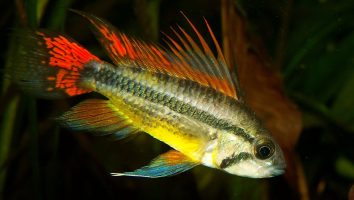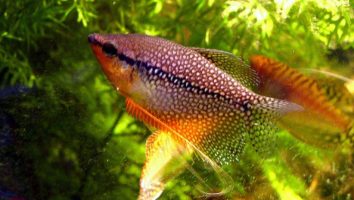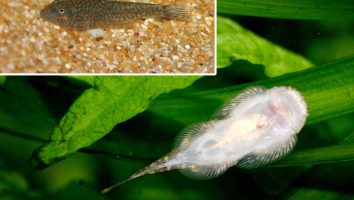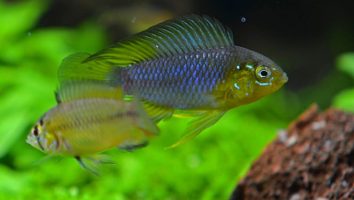The rosy tetra is a beautiful freshwater fish that is perfect for beginner aquarium hobbyists. They are easy to care for and are very peaceful, making them a great addition to any community tank.
This guide will teach you everything you need to know about rosy tetra care. You’ll learn about their diet, size, lifespan, and more!
Table of contents
Species overview
The rosy tetra (scientific name: Hyphessobrycon rosaceus) is a freshwater fish that’s native to the Amazon Basin in South America.
They are found in blackwater rivers and streams where the water is stained brown or red due to the high levels of tannins and other dissolved organic matter.
Rosy tetras are a schooling fish, which means they prefer to live in groups of at least 6-8 individuals. In the wild, these fish are known to eat small invertebrates and plant matter.
In the aquarium, rosy tetras are a popular choice for nano tanks and planted aquariums due to their small size and peaceful nature. They are also one of the few freshwater fish that can tolerate brackish water conditions.
Appearance

The Rosy tetra is a very colorful freshwater fish that is popular in the aquarium trade. As the name suggests, these fish are a beautiful rosy pink coloration.
This pink coloration is not uniform however. The back half of the fish is a deep pink, while the front half (starting at the belly) is a much lighter pink.
There is also a black horizontal stripe that starts at the gill plate and extends to the base of the tail fin. This stripe is bordered by a thin line of white.
The fins on this species are all transparent with a hint of pink. The dorsal and anal fins are both short and rounded. Their caudal fin is forked and slightly taller than the dorsal fin.
Rosy tetras have a very slender body shape that is long and tall. This gives them a sleek and hydrodynamic appearance.
Lifespan
Rosy tetras have a lifespan of 3-5 years in captivity, which is relatively long for a small fish. However, their lifespan in the wild is unknown.
A number of factors can impact the lifespan of rosy tetras, including water quality, diet, and stress levels.
Size
Rosy tetras reach a maximum size of about 2.5 inches (6.4 cm) in length. Although they are a small fish, they are still a good size for a community tank. Rosy tetras are a peaceful fish that do well with other fish that are similar in size.
Tank
Tank Size
Rosy tetras are a schooling fish, so you will need at least 6 of them for them to be happy. The recommended tank size for a school of 6 rosy tetras is 20 gallons.
If you want to keep a larger school of rosy tetras, or if you want to add other fish to the tank, you will need a larger tank. We recommend a 30 gallon tank as the minimum for a mixed community tank with rosy tetras.
Water Parameters
Rosy tetras are a peaceful freshwater fish that do best in a group of six or more of their own kind. They are a relatively easy fish to care for, as long as their water parameters are kept within a certain range.
They are a tropical fish, so they prefer warm water. They also prefer slightly acidic water, with a pH level between 6.0 and 7.0.
The water hardness should be between 5 and 15 dGH, and the alkalinity should be between 3 and 8 dKH.
Rosy tetras are not particularly finicky eaters, and will accept most sinking pellets and flakes designed for tropical fish. They also enjoy frozen or live foods such as brine shrimp, daphnia, and bloodworms.
What To Put In Their Tank
Rosy tetras are a very peaceful species of fish, so you don’t need to worry about them damaging any plants or decorations in their tank.
In terms of the substrate, these fish don’t have any specific requirements. You can use anything from gravel to sand without any issues.
When it comes to plants, these fish are also not picky. You can use live plants or fake plants, it doesn’t matter to them.
We recommend using live plants if you can though. Not only will they help to oxygenate the water, but they will also provide your fish with some shelter and a place to hide.
Rosy tetras also prefer dimly lit tanks. This can be achieved by using a dark substrate and adding some floating plants to the surface of the water.
Common Diseases
Rosy tetras are a pretty hardy bunch, but that doesn’t mean they can’t get sick. In fact, there are a few diseases that seem to target this species more than others.
The most common disease you’ll see in rosy tetras is ich. This is a parasitic infection that will show itself as white spots on the body, fins, and gills of your fish.
It’s important to catch ich early, as it can quickly kill your fish if left untreated. The most common way to treat ich is with a saltwater bath, but there are other methods as well.
The other disease you might see is tuberculosis. This is a bacterial infection that can be pretty serious if not treated properly.
The most common symptom of tuberculosis is weight loss, but you might also see your fish swimming erratically or see lesions on their body.
If you think your fish might have tuberculosis, it’s important to take them to a vet as soon as possible. This is a serious infection that can be difficult to treat.
Behavior & Temperament
Rosy tetras are another schooling fish that do best in groups of six or more. They are relatively peaceful, although they may nip at the fins of their tank mates if they feel threatened.
In the wild, these fish live in slow-moving rivers and streams in South America. In captivity, they prefer a similar environment with plenty of hiding places.
Rosy tetras are shy fish that spend most of their time near the bottom of the tank. They are known to be a bit skittish, so it’s important to have plenty of plants and other decorations for them to hide in.
These fish are active during the day and tend to rest at night. When they are active, you’ll see them swimming around in groups and looking for food.
Tank Mates
Rosy tetras are schooling fish, so they need to be kept in groups of at least six. This social behavior creates a few challenges when it comes to finding compatible tank mates.
The first is that any fish that is small enough to be eaten by a rosy tetra is out of the question. These fish will snack on anything that they can fit into their mouths!
The second challenge is that rosy tetras need to be kept in a tank with similar water conditions. They come from slow-moving rivers in South America, so a tank with a strong current is a no-go.
The third challenge is that rosy tetras are sensitive to changes in water conditions. So, any fish that are known to be finicky or messy are also not ideal tank mates.
With all of that in mind, here are some compatible species that make good rosy tetra tank mates:
- Neon Tetra
- Cardinal Tetra
- Black Widow Tetra
- White Cloud Mountain Minnow
- Rummy Nose Tetra
- Ghost Shrimp
Breeding
Tetras are known for being easy to breed, and the Rosy tetra is no exception. Rosy tetras reach maturity at around 4 months of age.
To breed them, start by setting up a breeding tank. It should be at least 10 gallons and should have a dark substrate. The dark substrate is important because it helps the female feel more comfortable when she’s ready to lay her eggs.
Rosy tetras are egg-scatterers. The female will lay her eggs all over the tank, and the male will follow behind and fertilize them.
After the eggs are laid, you can remove the adults. The eggs will hatch in about 24 hours.
Once the fry have hatched, you can feed them live foods or finely-crushed flake food. Keep the tank clean and the water quality high, and your fry should do well.
Conclusion
The Rosy Tetra is a perfect beginner fish. They’re beautiful, easy to care for, and get along well with other fish.
We think they’re a great addition to any community tank and would highly recommend them to anyone looking for a new fish.
So, what are you waiting for? Go out and get yourself a Rosy Tetra!

